
Cerca negli ebook:

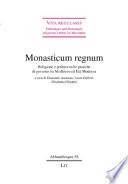
Monasticum regnum
Autore: Giancarlo Andenna , Laura Gaffuri , Elisabetta Filippini
Numero di pagine: 215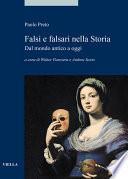
Falsi e falsari nella Storia
Autore: Paolo Preto
Numero di pagine: 621I falsi percorrono la storia come un filo rosso, a volte impalpabile, a volte capace di modificare il corso degli eventi. Solo a distanza di anni, se e quando vengono svelati, rivelano la loro efficacia: così la Donazione di Costantino per la storia della Chiesa o i Protocolli dei savi anziani di Sion nel diffondere l’antisemitismo. Si falsificano atti diplomatici, lettere, testamenti, documenti storici, ma anche le antiche epigrafi, e non solo per denaro. Anche la letteratura e l’erudizione vengono coinvolte, come nel caso dei falsi ottocenteschi della poesia ceco-medievale. La falsificazione abbonda nell’arte: una legione di imbroglioni pratica una lucrosa professione, che fa il paio con quella dei falsari di merci e di monete. Dietro i falsi ci sono appunto i falsari, ora nascosti nell’ombra, ora proiettati verso una fama spesso ambiguamente ammirata, come nei casi di Annio da Viterbo, che riscrive una falsa storia antica o di George Psalmanazar che offre agli inglesi una Formosa inesistente. Sono solo alcuni dei capifila di un esercito che, con alterna fortuna, ha conquistato la nostra civiltà fin dai tempi antichi.

Mortariensis ecclesia
Autore: Cristina Andenna
Numero di pagine: 716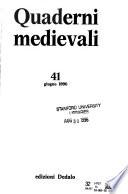
Quaderni medievali
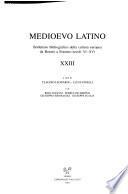
Medioevo latino
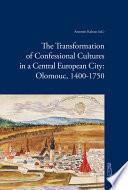
The Transformation of Confessional Cultures in a Central European City: Olomouc, 1400-1750
Autore: Autori Vari
Numero di pagine: 209The Transformation of Confessional Cultures in a Central European City results from a series of projects about the history of Olomouc, a medium-sized royal city in Moravia in the present-day Czech Republic. Set in its regional as well as wider contexts, this study of Olomouc contributes to research into ecclesiastical and religious developments of both the late medieval and early modern periods, and in particular the confessional divisions that followed the German Reformation. The chapters of this book are divided along chronological lines and also divided by topics and themes including: Hussitism and Utraquism, the early Czech Reformation, the impact and influences of the German Reformation, and the revival of the Catholic Church from the second half of the seventeenth century. Even though the struggles between rival confessions in the city only took place between the 1530s and 1650s, the council had asserted the city’s Catholicity against the Hussites in the fifteenth and early sixteenth centuries. This emphasis on the city’s Catholic spirituality, and the importance to the urban community of Catholic ritual and ceremonies was restored from the second half of the seventeenth ...
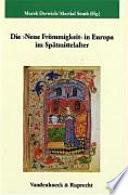
Die 'neue Frömmigkeit' in Europa im Spätmittelalter
Autore: Marek Derwich , Martial Staub
Numero di pagine: 351Der Band geht auf eine Tagung des MPI für Geschichte zurück, auf der Historiker und Theologen aus Deutschland und Polen sowie aus Frankreich, Italien, der Tschechischen Republik, Ungarn und den USA aus einer interdisziplinären und internationalen Perspektive heraus die >Neue Frömmigkeit
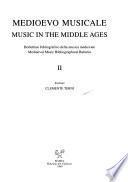
Medioevo musicale
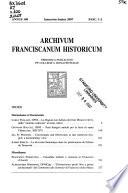
Archivum franciscanum historicum
Contains bibliographies.
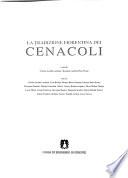
La tradizione fiorentina dei cenacoli
Autore: Cristina Acidini Luchinat , Rosanna Caterina Proto Pisani
Numero di pagine: 269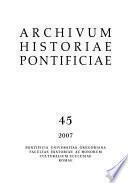
Archivum historiae pontificiae

Rivista di storia della chiesa in Italia

Monachorum tempora seu gesta exquirere
Autore: Giorgio Picasso
Numero di pagine: 406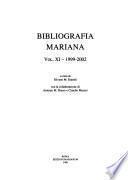
Bibliografia Mariana
Autore: Giuseppe Maria Besutti
Numero di pagine: 630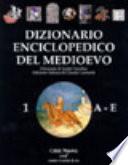
Dizionario enciclopedico del Medioevo
Autore: André Vauchez , Catherine Vincent , Claudio Leonardi
Numero di pagine: 2161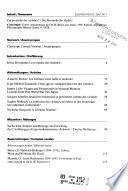
Revue suisse d'histoire
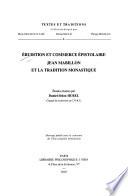
Érudition et commerce épistolaire
Autore: Daniel-Odon Hurel
Numero di pagine: 688Dom Jean Mabillon, mort en 1707, n'est pas un inconnu et certains de ses ouvrages (le De Re Diplomatica de 1681 et le Traite des Etudes Monastiques de 1691 par exemple) sont devenus des emblemes de l'histoire de l'erudition francaise. Plus encore, ce benedictin de la Congregation de Saint-Maur a ete promu par les siens des la fin du XVIIe siecle et le debut du XVIIIe siecle comme l'ideal et le modele d'un monachisme reforme. Si les mauristes eux-memes ont contribue a l'eriger en statue, l'historiographie du XIXe siecle et la restauration benedictine en ont fait une sorte de mythe. Mais Mabillon depasse la seule sphere de l'histoire monastique. Son oeuvre et ses methodes de travail renvoient a la fois a la Republique des Lettres et a la vie benedictine. Son utilisation de la correspondance (pres de 3200 lettres envoyees ou recues inventoriees a ce jour) est le meilleur temoignage de cette double appartenance et de la sociabilite qui en decoule. Ainsi erudition mauriste et demythification d'une part, tradition epistolaire en milieu monastique d'autre part, sont les deux axes que cet ouvrage, realise en marge de l'elaboration de l'inventaire de la correspondance de Dom Jean Mabillon, ...

Studi medievali
Includes section "Bullettino bibliografico".
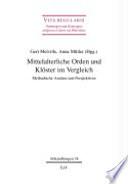
Mittelalterliche Orden und Klöster im Vergleich
Autore: Gert Melville , Anne Müller
Numero di pagine: 332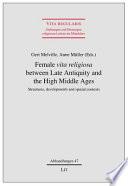
Female "vita Religiosa" Between Late Antiquity and the High Middle Ages
Autore: Gert Melville , Anne Müller , Forschungsstelle für Vergleichende Ordensgeschichte
Numero di pagine: 440This book considers the development of female religious life between Late Antiquity and the High Middle Ages. It is the first general study to address this earlier period. Chapters range widely over major themes associated with spiritual ideas and social functions, normative structures and spatial organization, forms of communal life, economic foundations, and social relationships. Along with these, "evolutionary" aspects - including charismatic beginnings and the activity of founders in relation to institutionalization, but also the effects of crises, reformation, and transformation - are examined in chronologically-broad and geographically-diverse settings, based on the analysis of significant phenomena and examples. The book provides a comparative approach, which will allow a better understanding of the dynamics, complexities, and differentiations in women's religious life, as well as their cultural importance and - in relation to the male religious - occasionally ambivalent status. (Series: Vita regularis - Ordnungen und Deutungen religiosen Lebens im Mittelalter. Abhandlungen - Vol. 47)
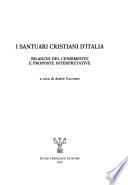
I santuari cristiani d'Italia
Autore: André Vauchez
Numero di pagine: 376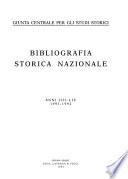
Bibliografia storica nazionale
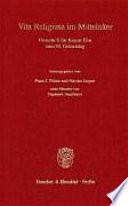
Vita religiosa im Mittelalter
Autore: Franz J. Felten , Nikolas Jaspert , Stephanie Haarländer
Numero di pagine: 985
Annuarium historiae conciliorum
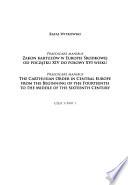
Analecta Cartusiana
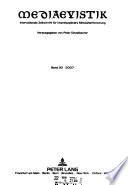
Mediaevistik
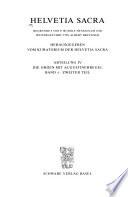
Helvetia sacra: Le diocèse de Lausanne (VIe siècle-1821), de Lausanne et Genève (1821-1925) et de Lausanne, Genève et Fribourg (depuis 1925)
Autore: Albert Bruckner
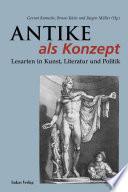
Antike als Konzept
Autore: Gernot Kamecke , Bruno Klein , Jürgen Müller
Numero di pagine: 284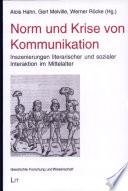
Norm und Krise von Kommunikation
Autore: Gert Melville
Numero di pagine: 522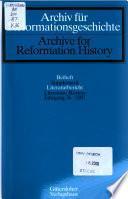
Archiv Für Reformationsgeschichte
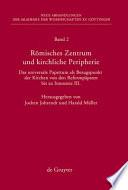
Römisches Zentrum and kirchliche Peripherie
Autore: Jochen Johrendt , Harald Müller
Numero di pagine: 356Die Abhandlungen der Akademie der Wissenschaften zu Göttingen sind das wichtigste wissenschaftliche Publikationsorgan der Göttinger Akademie. In dieser Reihe veröffentlichen vor allem die Akademiemitglieder und Mitarbeiter an den Forschungsunternehmen der Akademie die Ergebnisse ihrer Forschungen aus dem gesamten Bereich der Geisteswissenschaften und der Naturwissenschaften.
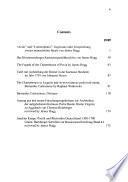
Kartäusische Kunst und Architektur mit besonderer Berücksichtigung der Kartausen Zentraleuropas
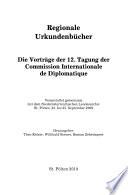
Regionale Urkundenbücher
Autore: Theo Kölzer , Willibald Rosner , Roman Zehetmayer
Numero di pagine: 327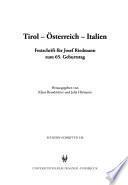
Tirol - Österreich - Italien
Autore: Klaus Brandstätter , Julia Hörmann-Thurn und Taxis
Numero di pagine: 691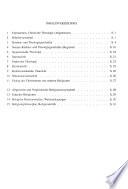
Neuerwerbungen Theologie und allgemeine Religionswissenschaft
Autore: Universität Tübingen. Universitätsbibliothek. Theologische Abteilung
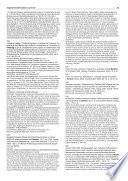
Bibliografia dell'arte svizzera, Bibliografia della conversazione dei beni culturali

Notariorum itinera. Notai toscani del basso Medioevo tra routine, mobilità e specializzazione
Autore: G. Pinto , L. Tanzini , S. Tognetti
Numero di pagine: 320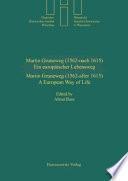
Martin Gruneweg (1562- after 1615)
Autore: Almut Bues
Numero di pagine: 403Der einem deutschen lutherischen Umfeld entstammende Kaufmannssohn Martin Gruneweg aus Danzig unternahm als Schreiber mit armenischen Kaufherren in Lemberg in der zweiten Halfte des 16. Jahrhunderts umfangreiche Handelsreisen, wobei er lebendige Aufzeichnungen uber die Regionen Mittel-, Ost-, Sudost- und Sudeuropas hinterliess. 1588 trat er in den Dominikanerorden ein und begab sich damit in ein polnisches katholisches Umfeld. Gruneweg hielt sich fur langere Zeit in den wichtigsten wirtschaftlichen und kulturellen Zentren seiner Zeit auf. So wusste er nicht nur vom Hof in Warschau, dem Handelsmechanismus in Danzig oder dem Zusammenleben verschiedener Ethnien in Lemberg Interessantes zu berichten. Seine Aufzeichnungen sind eine unerschopfl iche Fundgrube zur Religions- und Kirchengeschichte. Diese stehen beispielhaft fur die Geisteswelt eines nicht studierten Klosterbruders aus dem Ende des 16. Jahrhunderts. Mit der vom DHI Warschau inzwischen vorgelegten Edition der Aufzeichnungen Grunewegs* sind weitreichende Forschungsmoglichkeiten eroffnet worden. Der Band vereinigt die Beitrage einer zum Erscheinen der Edition 2008 organisierten internationalen Konferenz, welche die Fulle der...
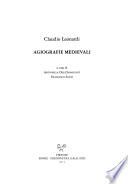
Agiografie medievali
Autore: Claudio Leonardi
Numero di pagine: 770Vedi maggiori dettagli